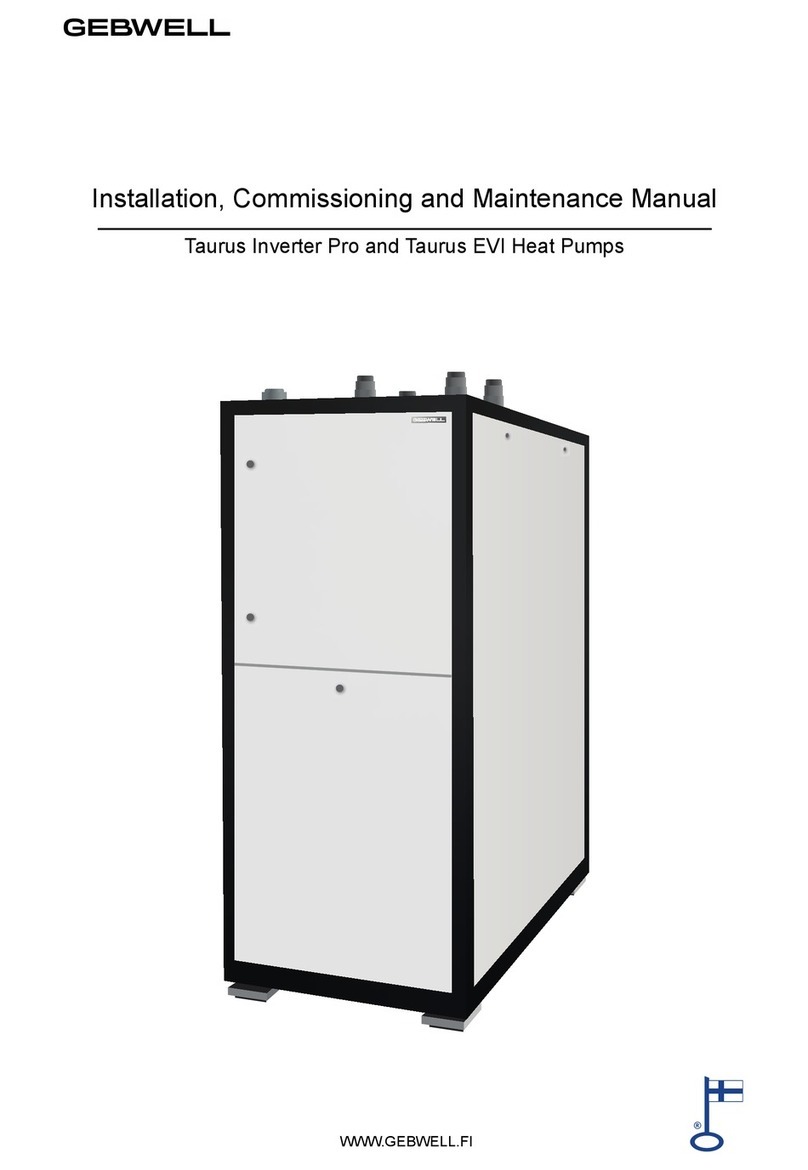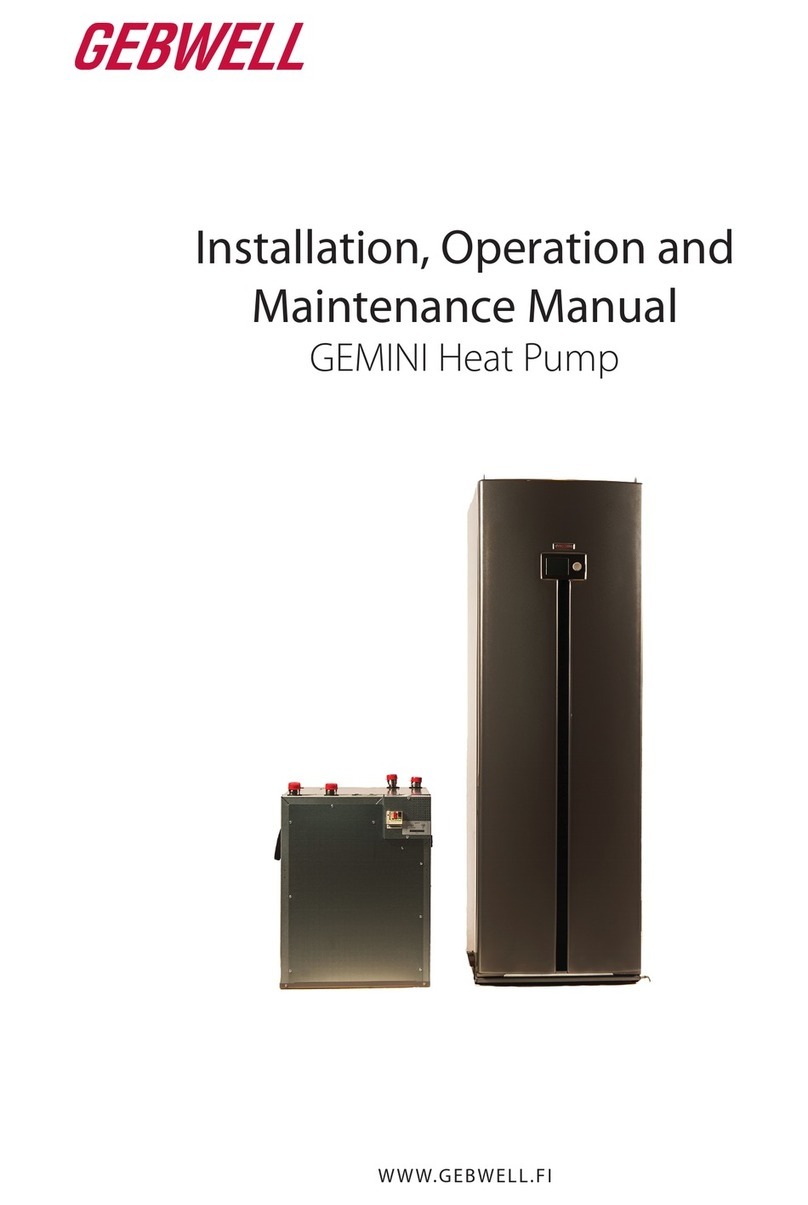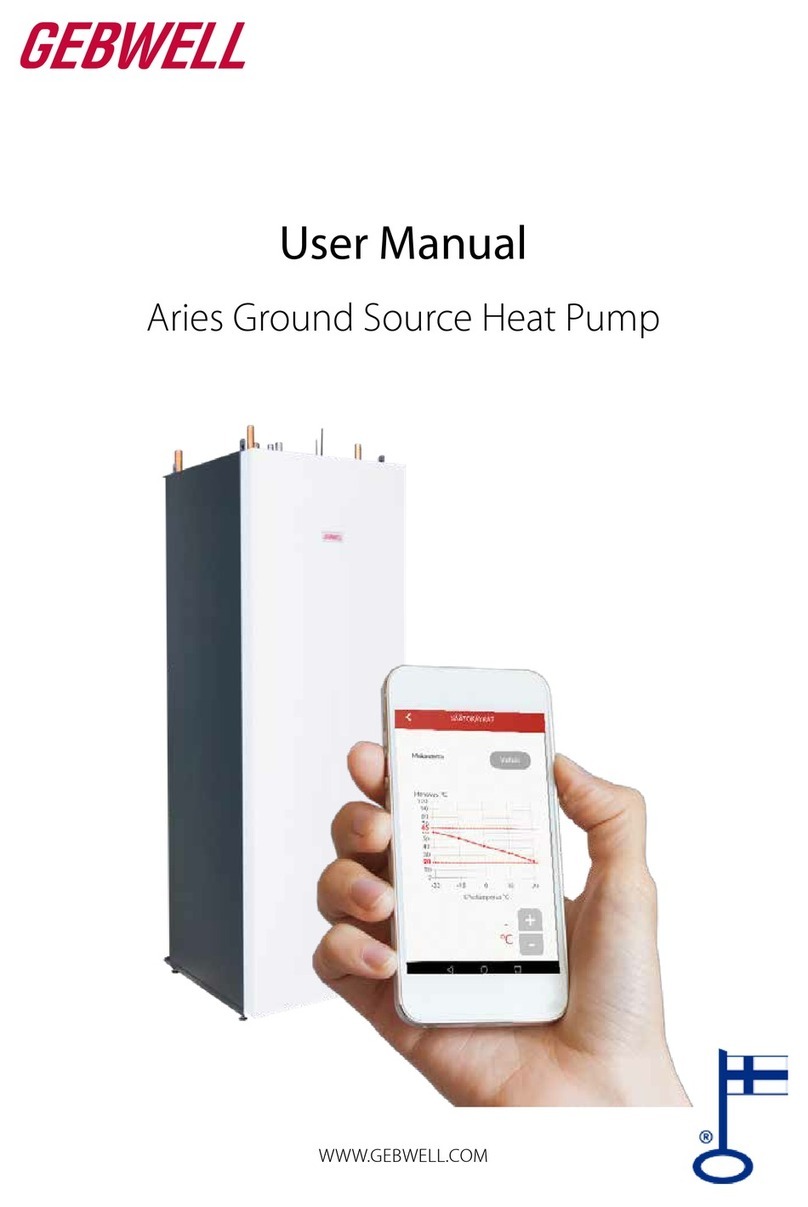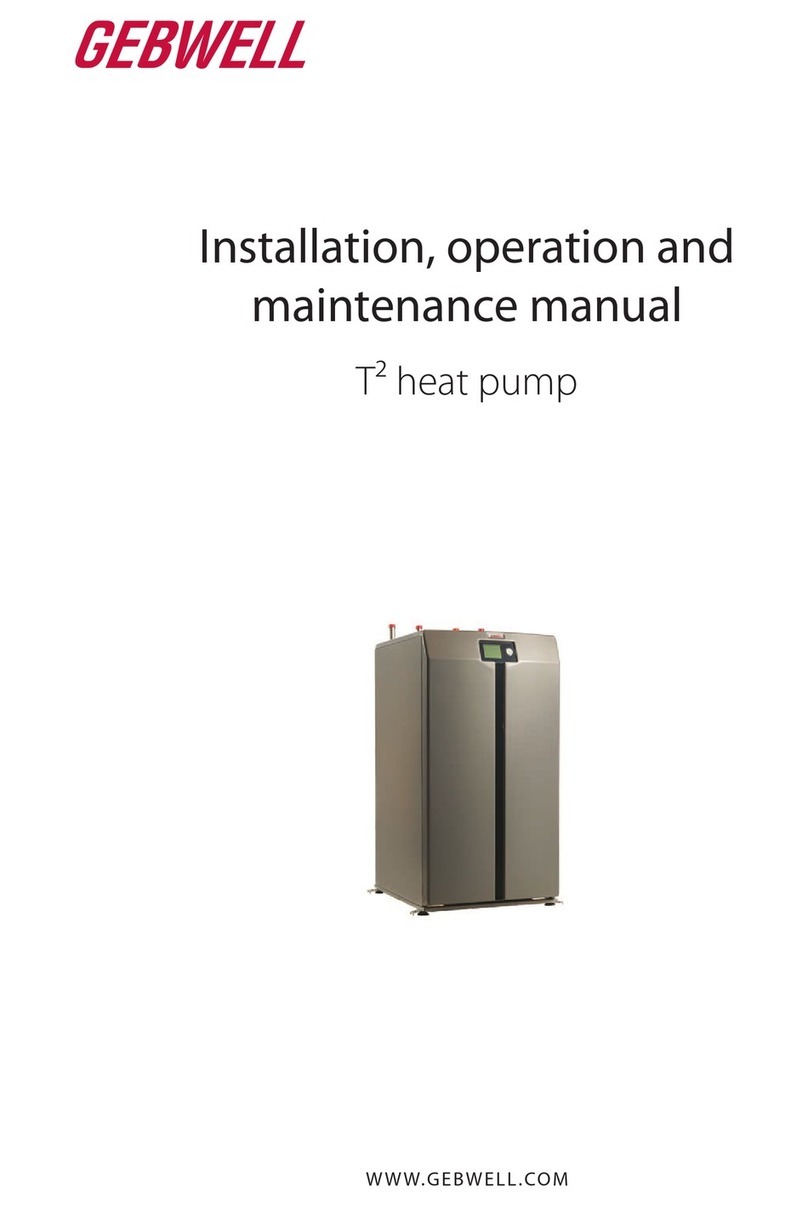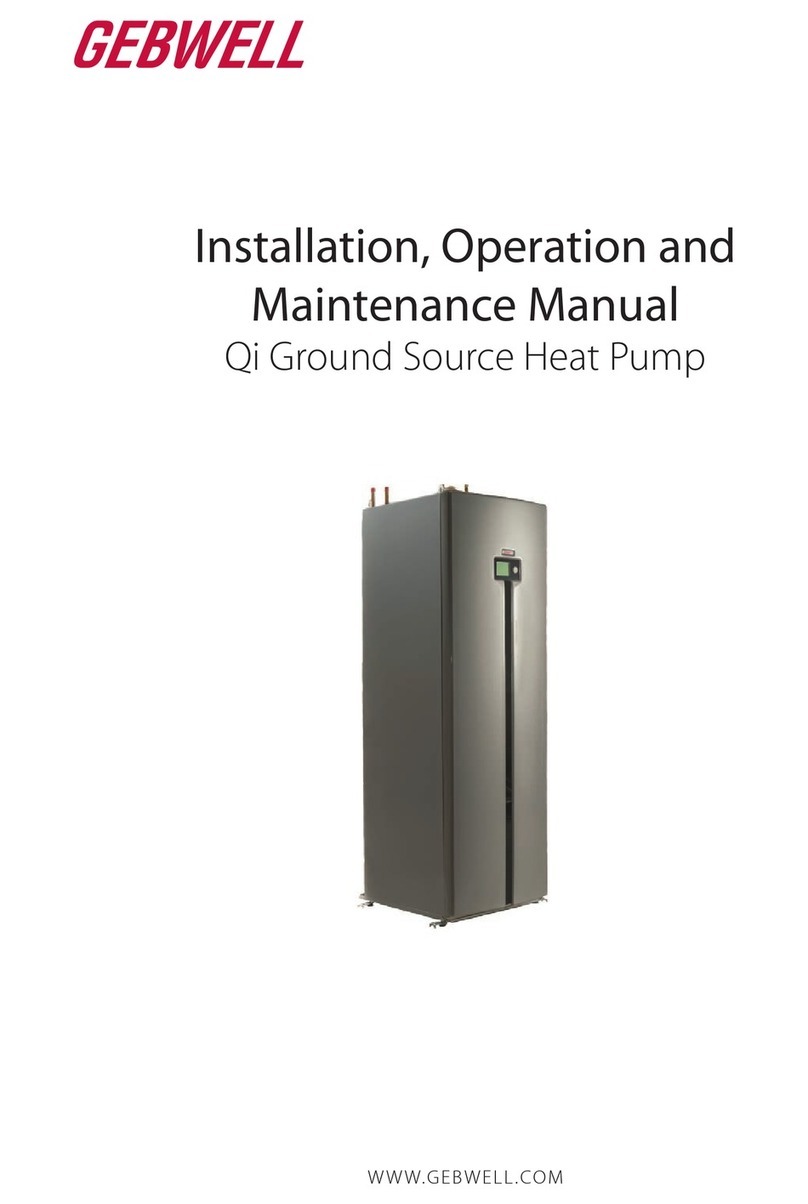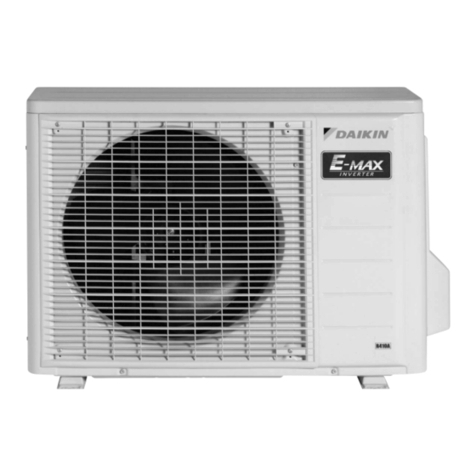Gebwell Aries Series Guide

Installation and Commissioning manual
Aries ground source heat p ump
WWW.GEBWELL.COM

2 Aries Installation and Commissioning manual
Contents
1INSTALLATION RECORD: ............................................................................................................................................................................................ 7
2GROUND SOURCE HEAT AND GROUND SOURCE COOLING .............................................................................................................................. 9
2.1Heat from the ground .............................................................................................................................................. 9
2.2Ground cooling ....................................................................................................................................................... 9
2.3Operating principle of a heat pump......................................................................................................................... 9
2.4Heating functions .................................................................................................................................................. 10
2.5Tips for making savings ........................................................................................................................................ 10
3IMPORTANT: ................................................................................................................................................................................................................. 11
3.1Serial number ........................................................................................................................................................ 11
3.2Safety instructions................................................................................................................................................. 11
3.3Hazardous substances ........................................................................................................................................... 11
4DELIVERY AND HANDLING ...................................................................................................................................................................................... 11
4.1Content of the delivery ......................................................................................................................................... 11
4.2Optional accessories ............................................................................................................................................. 11
4.3Storage .................................................................................................................................................................. 11
4.4Transportation ....................................................................................................................................................... 11
4.5Handling the front door ......................................................................................................................................... 12
4.6Detaching the cover of the control unit ................................................................................................................. 12
4.7Pulling out the compressor module ....................................................................................................................... 12
4.8Removing the packaging....................................................................................................................................... 13
4.9Heat pump placement ........................................................................................................................................... 13
5DIMENSIONS AND PIPE CONNECTIONS ................................................................................................................................................................ 15
5.1Pipe connections ................................................................................................................................................... 15
5.2Heat pump dimensions .......................................................................................................................................... 15
5.3Heat pump components ........................................................................................................................................ 16
5.4Heat pump sensors ................................................................................................................................................ 17
6PIPE INSTALLATION ................................................................................................................................................................................................... 18
6.1Collector ............................................................................................................................................................... 18
6.2Heat supply circuit ................................................................................................................................................ 20
6.3Domestic hot water system ................................................................................................................................... 21
7ELECTRICAL CONNECTIONS .................................................................................................................................................................................... 22
7.1General .................................................................................................................................................................. 22
7.2Power supply ........................................................................................................................................................ 22
7.3Connecting the sensors ......................................................................................................................................... 23
7.4Connecting the domestic hot water circulation pump ........................................................................................... 23
7.5Continuous alert .................................................................................................................................................... 23
7.6External control to the source pump ..................................................................................................................... 24
7.7Connecting accessories ......................................................................................................................................... 24
7.8Connecting an expansion card .............................................................................................................................. 24
7.9Heating control group (accessory) ........................................................................................................................ 24
8FILLING .......................................................................................................................................................................................................................... 25
8.1Filling the heating and domestic hot water side .................................................................................................... 25
8.2Filling the collector ............................................................................................................................................... 25
8.3Pressurising the collector ...................................................................................................................................... 25
8.4Pressure-test of the collector ................................................................................................................................. 25
9CHECK-UPS BEFORE STARTING THE HEAT PUMP ............................................................................................................................................. 26
10STARTING UP THE HEAT PUMP FROM THE OPERATOR UNIT ......................................................................................................................... 26
10.1Purging the air from the accumulator coil ............................................................................................................ 26
11STARTING UP FROM GEBWELL SMART APPLICATION ..................................................................................................................................... 26
11.1Downloading the Gebwell Smart app ................................................................................................................... 26
11.2Obtaining maintenance rights ............................................................................................................................... 26
11.3Logging into the application ................................................................................................................................. 27
11.4Device identification ............................................................................................................................................. 28
11.5Connecting to the heat pump’s Wi-Fi network ..................................................................................................... 28

v1-5 08072019 3
11.6Entering heat pump’s Wi-fi settings on smart device ............................................................................................ 29
11.8Operation without the collector and operating during construction ...................................................................... 33
11.9Purging the collector ............................................................................................................................................. 33
12HEAT PUMP SETTINGS ............................................................................................................................................................................................... 33
12.1HEAT PUMP ........................................................................................................................................................ 33
Time and date ................................................................................................................................................................. 33
Language selection ......................................................................................................................................................... 33
12.2DOMESTIC HOT WATER .................................................................................................................................. 33
12.3HEATING ............................................................................................................................................................. 34
13HEAT PUMP MAINTENANCE AND SERVICING .................................................................................................................................................... 36
13.1Inspections ............................................................................................................................................................ 36
13.2Drainage of the hot water tank (LVV1) ................................................................................................................ 36
13.3Drainage of the heating system ............................................................................................................................. 36
13.4Drainage of the collector ....................................................................................................................................... 36
14FAILURES ...................................................................................................................................................................................................................... 37
14.1Alerts ..................................................................................................................................................................... 37
14.2Troubleshooting .................................................................................................................................................... 37
14.3Troubleshooting table ............................................................................................................................................ 38
15TECHNICAL DETAILS ................................................................................................................................................................................................. 41
16EXAMPLE VALUES FOR HEAT PUMP SETTINGS FOR DIFFERENT HEATING NETWORKS ....................................................................... 42
17SERVICE LOG ................................................................................................................................................................................................................ 43
18ENERGY LABEL ........................................................................................................................................................................................................... 44
APPENDIX 1: DECLARATION OF CONFORMITY
APPENDIX 2: ELECTRICAL DIAGRAM

4 Aries Installation and Commissioning manual
KEEP THE OPERATION INSTRUCTIONS IN THE IMMEDIATE VICINITY OF THE DEVICE!
Read the instructions carefully before installing, adjusting or servicing the device. Always follow the instructions. Ask the
installation technician to complete the installation log. The manufacturer’s warranty is only valid with an installation log.
Fill in the details below. If there are failures with the device, these details must be available.
Ground source heat pump model:
Serial number:
HVAC company:
Name:
Installation date:
Phone:
Electrician:
Name:
Installation date:
Phone:
MARKING:
The CE mark is the manufacturer’s declaration that the product conforms to EU legal requirements. Gebwell Ltd affirms that
the product meets all of the requirements of relevant EU directives. The purpose of the CE mark is to facilitate the free
movement of goods on the internal market in Europe.

v1-5 08072019 5
Gebwell Ltd.
Patruunapolku 5, 79100 LEPPÄVIRTA, tel 020 1230 800, info@gebwell.fi
issues the product,
Aries heat pump
a warranty regarding manufacturing and material faults, with the following contents.
Warranty period and start date
A two- (2) year warranty will be issued to this product, counting
from the product delivery date.
Two copies of the commissioning and warranty protocol will be
delivered with the heat pump. The installer / reseller of the heat
pump fills the said protocol in and goes over it with the customer.
Both Parties confirm they have gone over the protocol, and
accept the terms of warranty with their signature. The customer’s
copy of the warranty protocol must be stored, and presented on
request. The other copy must be delivered to the factory within
1 month from the product commissioning date. The warranty is
not valid in case the commissioning and warranty protocol has
not been filled in correctly, or if the factory copy has not been
returned to the factory.
Warranty contents
The warranty extends to all manufacturing and raw material
faults that have occurred in this product during the warranty
period, as well as the direct expenses related to the changing of
these devices.
The buyer is responsible for any device malfunctions caused by
the storage conditions between the delivery and commissioning
date (cf. installation, operating and maintenance manual;
storage).
5-year component warranty
In addition to the normal product warranty, a five- (5) year
component warranty will be issued to the heat plate exchangers,
starting from the product delivery date.
The component warranty does not extend to the direct or indirect
expenses caused by the changing of a component. Otherwise, all
terms and limitations of the product warranty apply for the
component warranty, as well.
Warranty limits
The warranty does not extend to the expenses (travel, power
consumption, etc.) caused by a malfunctioning device, the
buyer’s production loss, loss of earnings or other indirect
expenses.
This warranty has been given on the condition that the product
is working in normal operating conditions, and that the operating
instructions are followed carefully. The liability of the guarantor
is limited according to these terms and conditions, and the
warranty does not extend to such damage as the product may
cause to another item or person.
The warranty does not extend to direct personal injuries or
damage to property caused by the delivered product.
The warranty presupposes that the installation has followed all
valid regulations, generally accepted methods of installation and
installation instructions given by the manufacturer of the
product.
The warranty does not extend to or is not valid in case the
product is used in any other way than required by the sizing.
The customer is obliged to perform a visual check on the product
before the installation, and it is not allowed to install a product
that is clearly faulty
The warranty does not cover malfunctions, which have been
caused by
the transportation of the product
the carelessness of the product operator, the overload
of the product, the failure of adhering to the operating
instructions or maintenance
circumstances beyond the guarantor’s control, such
as voltage fluctuations (the maximum range of
voltage fluctuations is +/- 10%), lightning, fire or
accidents other than those caused by the repair work,
maintenance or structural changes done by authorised
resellers
product installation or positioning on the operating
site, which is in contradiction with the installation,
operating and maintenance manual, or otherwise
incorrect.
The warranty does not extend to the repair of defects that are
insignificant as far as the product’s operating condition is
concerned, such as surface scratches. The warranty does not
extend to the normal adjustments of the product as outlined in
the operating manual, operation training visits, maintenance and
cleaning measures, or such work which is caused by the neglect
of safety or installation regulations or the settlement of this on
the installation site.
The warranty terms outlined in the joint recommendation of the
Association of Finnish Metal and Engineering Industries and the
Finnish Competition and Consumer Authority are observed to
such an extent which has not been separately mentioned above.
The warranty becomes void, if the product is
repaired or altered without Gebwell Ltd.’s permission
used for a purpose, for which it has not been intended
stored in a humid or otherwise unsuitable location
(cf. installation, operating and maintenance manual).
What to do if a malfunction occurs
If a malfunction occurs during the warranty period, the customer
must immediately (normally within 14 days) notify the
authorised Gebwell reseller from whom the product was bought.
The notification must include which product has malfunctioned
(product model, serial number), the details of the malfunction in
as much detail as possible, as well as the circumstances when the
malfunction has developed and/or occurs. The warranty form,
correctly filled in at the handover time must be submitted on
request. Appealing to a warranty-period notification is not valid
after the warranty period is over, unless the notification has been
submitted in writing during the warranty period.
The notification must be submitted immediately after the
malfunction has been discovered. If the notification is not

6 Aries Installation and Commissioning manual
submitted immediately once the buyer has noticed the
malfunction, or when the buyer should have noticed the
malfunction, the buyer loses the right to appeal to this warranty.
Maintenance service in Finland
Maintenance work for this product, during the warranty period
and after the warranty period, is performed by the maintenance
organization authorised by the manufacturer, throughout the
entire estimated economic life of the heat pump.
How to submit a service request
All warranty repairs, service requests and orders for spare parts
will primarily be submitted directly to the authorised Gebwell
reseller that sold/delivered the product. Before submitting a
service request, the following things must be taken into
consideration:
read the installation and maintenance manual
carefully and think whether you have used the device
in accordance with the instructions in the manuals
before submitting a warranty repair request, ensure
that the warranty period is still valid, read the
warranty terms carefully and find out the product’s
model and serial numbers
all parts belonging to a device must be included when
the device is returned
the returned product must be closed in such a way,
that handling it would not cause health or
environmental hazards.
A device changed on the basis of the warranty is the property of
the device manufacturer. Gebwell Ltd. reserves the right to
decide how, where and who will perform the repair work or
change that is at the manufacturer’s responsibility.
Gebwell Ltd. is not liable for the breakdown of a wrongfully
installed device.
The device can only be repaired by a professional. Incorrect
repair work and settings can cause danger for the user, the
malfunction of the device, and weaken the efficiency of the
device. The visit of a retailer or a service agent is not free of
charge even during the warranty period, in case the device has to
be repaired due to incorrect installation, repair or adjustment.

v 1-4 05022019 7
1 INSTALLATION RECORD:
The heating system must be inspected in accordance with applicable regulations before commissioning. The inspection must
be performed by a qualified person. The installation log should be completed before the equipment is handed over to the end-
user. A completed installation log is a precondition for the validity of the warranty.
Inspected Description Comment
COLLECTOR:
Circulation direction checke
d
S
y
stem pressure-teste
d
S
y
stem rinse
d
S
y
stem ble
d
Fluid quantit
y
in the collecto
r
Strainer checked/cleane
d
Expansion tan
k
Initial pressure of the expansion tank (0.5 bar)
Strainer/flow direction
Safet
y
valve checke
d
Shu
t
-off valves checke
d
Len
g
th of the collecto
r
m
- If there are several loops, record the len
g
ths:
m
Checked by (date)
HEATING SYSTEM:
S
y
stem filled
Accumulator coil filled / bled (coil
accumulator)
S
y
stem pressure-teste
d
S
y
stem rinse
d
S
y
stem ble
d
Safet
y
valve
Diaphra
g
m expansion tan
k
Initial pressure of the expansion tan
k
Strainer checked/cleane
d
Pressure measurin
g
device
Shu
t
-off valves
Fillin
g
valve
Buffer accumulato
r
Heatin
g
circuit control se
t
Circulation water pumps
Rotation direction of pumps
Actuators
Checked by (date)
DOMESTIC HOT WATER:
S
y
stem filled
S
y
stem p
r
essure-teste
d
S
y
stem rinse
d
Safet
y
valve
Pressure measurin
g
device
Buffer accumulato
r
Hot water circulation
Checked by (date)

8 Aries Installation and Commissioning manual
Inspected Description Commen
t
ELECTRICITY:
Buildin
g
fuses
Heat pump fuses
Phase sequence
Power suppl
y
Re
g
ulation
g
roup(s)
Suppl
y
water sensor(s)
Room temperature senso
r
Outdoor temperature senso
r
Checked by (date)
CONTROLLER:
Room set point for the heatin
g
circui
t
Heatin
g
curve
g
radient se
t
Minimum set point for supply water to the
heatin
g
circui
t
Maximum set point for supply water to the
heatin
g
circui
t
Checked by (date)
GENERAL:
Wiring in accordance with the installation
instructions
Connection seals
Device started up in accordance with the
instructions
Operation of the machine monitored on site
for 30 minutes
Checked by (date)
GUIDANCE FOR THE END USER:
Addin
g
fluid to the collecto
r
Increasing the pressure of the heating
s
y
ste
m
Settin
g
the heatin
g
re
g
ulation curve
App user interface
g
uidance
Checked by (date)

v 1-4 05022019 9
2 GROUND SOURCE HEAT
AND GROUND SOURCE
COOLING
A well-designed ground source heating system with the
correct power values offers low operating costs and good
energy efficiency. The ground source heat pump enables
you to efficiently heat your indoor air and domestic hot
water. In the summer, the system can also cool indoor air
in an environmentally friendly way.
2.1 Heat from the ground
The ground source heat pump collects heat from the
ground and brings it into the building. Heat can be
collected using either a network of pipes embedded in a
bored well, a heat collection pipe network installed close
to the soil surface, or a network of pipes anchored to the
bottom of a body of water.
Bored well as a heat source
Soil as a heat source
Watersystem as a heat source
Further information about heat collection systems and
their designs can be found on the websites of Gebwell Ltd.
and the Finnish Heat Pump Association (SULPU).
www.gebwell.com
www.sulpu.fi
2.2 Ground cooling
The low temperature of the brine can also be used to cool
your home. In the summer, free cooling energy can be
transferred from the ground using only a water circulation
pump. The ground source heating system can be
connected to the ventilation fan convector or an
underfloor heating/cooling system designed for cooling.
2.3 Operating principle of a heat pump
The heat pump consists of four main components
Evaporator
Compressor
Condenser
Expansion valve
The solar energy stored in the soil is collected by the brine
circulating in the heat collection pipe networks.
In the evaporator, the energy contained in the brine is
transferred to the refrigerant, which absorbs the heat
energy as it evaporates. The brine returns to the ground
approximately 3°C cooler than when it came. The brine
entering the heat pump can be no colder than -5°C.
The pressure and temperature of the refrigerant increase
in the compressor. The refrigerant also absorbs the heat
energy created by the compressor’s work.
The warm refrigerant is transferred into the condenser.
The condenser transfers the heat energy from the
refrigerant into the water circulating in the house’s heating

10 Aries Installation and Commissioning manual
system, which distributes it to heat the building and the
domestic hot water with the help of a change-over valve.
The refrigerant condenses into a liquid state in the
condenser as it loses heat energy.
The pressure of the refrigerant remains high as the liquid
refrigerant is transferred to the expansion valve. The
pressure of the refrigerant decreases in the expansion
valve, and the temperature drops to approximately -10°C.
The expansion valve injects the correct amount of
refrigerant into the evaporator, where the heat energy
transferred from the brine causes the refrigerant to
evaporate.
Figure: Functional description
1: Heat pump
2: Condenser
3: Compressor
4: Evaporator
5: Change-over valve
6: Water circulation pump, heating/domestic hot water
charge
7: Expansion valve
9: Collection pump
9: Heat collection pipe, ground loop
10: Heat collection pipe, bored well
11: Underfloor heating
12: Radiator heating
13: Hot water tank
2.4 Heating functions
Domestic hot water
The heat pump outputs domestic hot water based on the
tank’s operational measurement sensor (B3). The
temperature of domestic hot water can be selected from
the options, Eco, Normal or Comfort.This selection
affects the amount of hot domestic hot water. When
Comfort is selected, the heat pump also uses an electric
heater to heat domestic hot water.
Heating
The heat pump outputs heating water directly into the
building’s heating network. Automatic regulation
determines the set point for the supply water from the
heating circuit based on the set heating curve and the
outdoor temperature measurement. The controller uses the
set value for the supply water to determine the set point
for the heat pump, and the frequency-controlled
compressor uses this value to set itself to the correct
rotation speed in order to keep the temperature of the
supply water at the set point. The room temperature sensor
also affects the set point.
In order for the heat pump to operate at maximum
efficiency, the heating system and the collector must be
under ideal conditions. The difference between the
heating system’s output and return temperatures must be
5–8°C, and the difference between the collector’s output
and return temperatures must be 3–4°C. If the temperature
differences deviate from these values, the efficiency will
decrease, along with the savings. The heat pump’s
controller ensures the correct temperature difference for
the heat supply and the collection pump.
Factory settings:
Heating temperature difference: 5°C
Domestic hot water preparation temperature difference:
8°C
Collector temperature difference: 3°C
2.5 Tips for making savings
The heat pump is intended to generate the desired heat and
domestic hot water. The system attempts to meet these
desires by all available means within the limits of the set
values.
Important factors affecting energy consumption are the
indoor temperature, the domestic hot water consumption,
the temperature of the domestic hot water, the quality of
the house’s insulation, and the desired level of comfort.
Keep the aforementioned factors in mind when changing
the device’s settings.
IMPORTANT:
Floor heating and radiator thermostats can have a negative
impact on energy consumption. They reduce the flow rate
in the heating system, and the heat pump compensates for
this by raising the temperature of the network. This affects
the device’s operation by causing more electrical energy
to be consumed. Thermostats are only intended for
adjustments due to “free heat” (from the sun, people,
fireplaces, etc.)

v 1-4 05022019 11
3 IMPORTANT:
These installation instructions describe installation and
maintenance measures that should only be carried out by
a professional.
The installation instructions should be given to the
customer in the manual folder.
3.1 Serial number
The device’s serial number is on the ID plate, which is
attached on the cover panel of the control unit, as well as
on the back cover of the user manual.
Keep in mind that you will need to know the device’s
serial number whenever you contact the manufacturer,
maintenance or support services.
3.2 Safety instructions
The following safety instructions must be kept in mind
when handling, installing and operating the device.
Only lift the device at the locations shown in the
instructions.
The metallic edges of the heat pump could injure your
hands when you are moving the unit. Use slash-
resistant gloves to move the heat pump.
Always unplug the device before servicing.
Never jeopardise safety by bypassing safety devices.
The refrigeration compressor unit in the device must
only be serviced and repaired by a qualified person.
Do not rinse the heat pump with water.
During installation, keep all of the device’s housing
panels intact to prevent water from splashing onto the
device’s electrical components.
3.3 Hazardous substances
Electricity
The electrical components inside the heat pump carry a
potentially fatal current. Unplug the device before you
open the protective plate on the control unit or the
compressor module.
Refrigerant
The heat pump contains a refrigerant that is harmful and
hazardous to the environment. The refrigerant is in a
hermetically sealed refrigerant circuit in the compressor
module. If the refrigerant leaks into indoor premises, the
room must be thoroughly ventilated.
Heat collection liquid
The mixture of antifreeze agents, including ethanol, used
as the heat collection liquid are highly flammable. Avoid
splashing the liquid on your skin.
4 DELIVERY AND
HANDLING
4.1 Content of the delivery
Gebwell Aries heat pump 1
Installation and maintenance manual 1
User instructions 1
Outdoor temperature sensor 1
Room temperature sensor 1
Safety valve for the heating circuit
G1/2” – 2.5 bar 1
Safety valve for the domestic hot water circuit
G1/2” – 10 bar 1
Power supply cable with plug (16A) 1
4.2 Optional accessories
Collector valve group
Installation set
Cooling extension for installation set
Heating pump extension for installation set
Heating control group
Domestic hot water buffer tank
Heating buffer tank
Domestic hot water circulation pump series
Diaphragm expansion tank for the collector
Diaphragm expansion tank for heating
Energy measurement
4.3 Storage
Before installation, the Aries heat pump should be stored
in its shipping package in a warm, dry place. If the device
is stored in a cold or humid environment, the electrical
components may get wet, causing failures in the operation
of the device at a later stage.
4.4 Transportation
The panels on the exterior of the heat pump should be
removed if the device is being brought into a confined
space, and replaced once the device has been moved
inside. The heat pump can be tilted temporarily but it must
not be left in a slanted position for long periods, even
during transportation. The maximum tilt angle for the heat

12 Aries Installation and Commissioning manual
pump is 45°. The heat pump should not be turned onto its
side. However, if it is necessary to turn the heat pump onto
its side for reasons such as transportation, the compressor
unit can be removed during transportation. However, the
heat pump must not be transported upside down. If it is
necessary to tilt the heat pump, the heat pump must be left
in the vertical position for at least two hours before
starting up to ensure that the lubricating oil in the
compressor flows into the right place. The heat pump
should only be lifted by the pallet. The device must be
transported to the place of installation on the pallet.
4.5 Handling the front door
The heat pump front door has to be removed during
operations inside the heat pump. To remove the front door,
lift it straight up. Lifting can be assisted with a foot at the
bottom. To reinstall the door, lift the door so that the lip at
the bottom of the door goes into the slot on the bottom of
the heat pump and the lip on the top of the door sits at the
top of the heat pump.
4.6 Detaching the cover of the control unit
The cover of the control unit is attached with four hex
screws. You will need a 6-mm ring spanner or socket
wrench to open the cover.
4.7 Pulling out the compressor module
The compressor module can be detached from the heat
pump to facilitate transportation and servicing.
1. Close the shut-off valves (VS1–VS4).
2. Open the insulation from beneath the shut-off valves
so that you can open the pipe system’s mounting nuts.
When you open the mounting nuts, hold on to the key
barrel for the flexible pipe underneath using the other
key.
3. Turn the shut-off valves of the collection pipes closest
to the edge into the horizontal position (the O-ring
seals permit this without squeaking).
4. Detach the two screws from the device frame of the
compressor module at the mounts on the front edge.
5. Pull the compressor module out using lifting straps
intended for this purpose.
6. Detach the pipes from the connections (valves VS1–
VS4).

v 1-4 05022019 13
7. Loosen the screws on the compressor unit mounts and
detach the compressor unit’s plugs from both the
electrical switchboard and the compressor unit.
8. Pull the compressor unit out.
4.8 Removing the packaging
The product is packaged in protective plastic in such a
way that it can be installed without removing the plastic.
The protective plastic can be retained to protect the heat
pump until it is started up.
Ensure that you have received the correct product with
the correct accessories.
Place the heat pump near the intended installation
location.
Lift the heat pump off the shipping pallet.
Use the adjustable feet to get the heat pump into a
horizontal and stable position.
Make sure the frame is not in contact with the
building’s structures, with the exception of the
adjustable feet.
4.9 Heat pump placement
The placement of the heat pump must take account of a
few factors related to safety, convenience and
serviceability.
The temperature of the placement location must be
between +5°C and +30°C. The installation space must be
adequately ventilated. Water condenses on the cold
sections of pipe in the collector if the space is very humid.
The heat pump’s compressor (K1) generates a noise that
can be conducted along the structures of the house into

14 Aries Installation and Commissioning manual
other areas far away. It is advisable to use flexible
components for pipe connections. The heat pump should
be placed in a location where noise cannot be conducted
in a way that adversely affects residential premises. If
necessary, supplementary noise insulation can be installed
in the wall structures between the heat pump’s installation
location and residential premises, and additional rubber
cushioning can be fitted beneath the heat pump’s feet. We
recommend placing the heat pump in a separate utility
services room. Noise can be prevented from travelling
through structures by using solutions such as special floor
structures in the area reserved for the heat pump. A cast
floor that is separated from the building’s other areas can
prevent noise from travelling through the floor and into
residential premises.
At least 700 mm of clearance should be reserved in front
of the heat pump to allow the compressor unit to be pulled
out for servicing. For the same reason, the device must not
be installed below the floor surface. Adequate clearance
should be left behind the heat pump to prevent vibrations
from being transmitted onward. In addition, clearance of
600 mm should be reserved to the side of the heat pump if
you would prefer to connect the collector’s pipes to either
side of the heat pump rather than the top.
When installing a factory-made installation group with the
Aries heat pump, a clearance in accordance to the picture
below should be reserved around the heat pump.
Installation group installed on the side of the heat pump:
Installation group installed onto the wall beside the heat
pump:

v 1-4 05022019 15
5 DIMENSIONS AND PIPE
CONNECTIONS
5.1 Pipe connections
Aries 6 Aries 12
BO1 Brine to the
g
roun
d
28m
m
28m
m
BI2 B
r
ine from the
g
roun
d
28m
m
28m
m
WO1 Heatin
g
suppl
y
22m
m
28m
m
WI2 Heatin
g
return 22m
m
28m
m
CI1 Cold wate
r
22m
m
22m
m
HW2 Domestic hot wa
t
e
r
22m
m
22m
m
HWC3 Hot water circulation 15m
m
15m
m
5.2 Heat pump dimensions

16 Aries Installation and Commissioning manual
5.3 Heat pump components
CHANGE-OVER VALVE
+ ACTUATOR (VV1)
SHUT-OFF VALVE
(VS1/CHARGE OUTPUT)
SHUT-OFF VALVE
(VS3/BRINE TO THE GROUND)
SHUT-OFF VALVE
(VS2/CHARGE RETURN)
SHUT-OFF VALVE
(VS4/BRINE FROM THE GROUND)
INSIDE THE COMPRESSOR UNIT:
- HEAT SUPPLY PUMP (Q9)
- SOURCE PUMP (Q8)
- COMPRESSOR (K1)
- FREQUENCY CONVERTER (TM1)
- EXPANSION VALVE (PV1)
- EVAPORATOR (LS1)
- CONDENSER (LS2)
TANK’S PROTECTIVE ANODE
LINE PROTECTION
AUTOMATION
HOT WATER TANK (LVV1)
FLOW-THROUGH
RESISTOR (SV1)
CONTROL CENTRE
OVERHEATING PROTECTOR
FOR THE FLOW-THROUGH
RESISTOR (SV2)
DOOR LOCK
CONTROLLER

v 1-4 05022019 17
5.4 Heat pump sensors
Functional and measuring thermal sensors are installed in
the heat pump. The sensors are attached to components
and insulated from external heat. Some of the sensors are
located in the compressor unit module.
B2 Domestic hot water (tank)
B3 Domestic hot water (operation)
B21 Charge heating water supply (heating supply)
B71 Charge heating water return (heating return)
B91 Brine from the ground
B92 Brine to the ground
B81 Hot gas
B85 Suction gas B2
B3
B21
B91
B92
B71
B85
B81

18 Aries Installation and Commissioning manual
6 PIPE INSTALLATION
6.1 Collector
When using PEM pipes 40 x 4.2 PN6.3.
Device Recommended
collector pipe
length (m)
Recommended
active drilling
depth (m)
Aries 6 300
–
400 100
–
160
Aries 12 380
–
500 160
–
300
These figures are approximate example values. Before
commencing installation, the building’s heat requirement
should be precisely calculated.
The maximum recommended length of one loop of the
collector is 400 m. If a longer heat collection pipe network
must be installed, the networks should be divided into
several loops and connected in parallel. The connection
should be made in such a way that it is possible to balance
the flows in the loops.
The collecting pipe network should steadily rise towards
the heat pump to prevent air pockets. If this is not possible,
purge valves should be installed at the high points.
Before installing the heat pump, rinse the collector pipe
network to remove any impurities that may remain after
installation.
The collector connection must be selected before the
device is put into position. The connection can be placed
on the right, left or behind instead of using a top
connection. At least 600 mm of clearance must be
reserved in the outbound direction.
1. Remove the cellular rubber insulation from the
end of the pipe
2. Take note of the sensors when you make changes
to the pipe network
3. Detach the collection pipes from the elbow fitting
by pressing down on the plastic collar on the claw
coupling using a spanner.
4. Detach the pipes from the top connection and turn
the elbow fitting in the desired direction.
5. If necessary, cut the pipe to the desired length.
6. Reattach the pipe by pressing on the elbow fitting
Insulate all of the collecting pipes in the building using
closed-cell insulation to prevent condensation.
Use rubber-insulated brackets for pipes.
Place the level expansion tank at the highest point on
the collector, on the inbound pipe before the heat
pump.
Mark the name of the brine liquid used on the level
expansion tank and in the installation log.
Install shut-off valves in pipe connections as close to
the heat pump as possible.
Make sure that the top of the heat pump and the
electrical equipment are entirely free of water during
operation.
Water may condense on the surface of the level
expansion tank. Locate the level expansion tank in a
place where condensed water is not able to drip onto
the heat pump.
Connect the collector’s valve group with the related
expansion tanks as shown in the diagram. The arrow
on the poppet seat indicates the flow direction. The
valve group size is DN25. Do not connect pipes
smaller than 28 mm.
The collector must be pressure-tested with 3 bars of
pressure and the test pressure must be sustained for at
least 30 minutes.
Only connecting components designed for cold
conditions should be used in the collector.

v 1-4 05022019 19
Connection alternatives
The collector can be depressurised using the level
expansion tank (EX1). The level expansion tank should be
installed at the highest point in the circuit so that air can
rise into the tank. Do not connect the expansion tank to
a lateral branch as this may prevent air from rising
freely. If the level expansion tank cannot be installed at
the highest point in the circuit, the system must be made
pressurised (EX2). In such cases, a diaphragm expansion
tank should be used, and this is available as an accessory.
In cooling systems, the collector must be made
pressurised.
Connection to the side
Installing the collector onto several loops
If you are using several collector loops, every circuit must
have shut-off and control valves. Follow the valve
manufacturer’s instructions when you install control
valves. The valve must be installed in such a way that it is
easy to regulate and inspect, and it does not freeze. Purge
the circuits of air one at a time and regulate the flow rate
in relation to the lengths of the circuits. Try to use
collection loops of equal length.
Ground cooling
Ground cooling functions best when heat collection is
arranged using a bored well. During the summer, loops
installed in the soil or in lakes may be at such a high
temperature that the required cooling power cannot be
obtained. Air within the collector should be allowed to
freely rise to the expansion tank. Purging should always
take place at the highest point in the collector. If it is
necessary to connect the cooling radiator to the highest
point in the circuit, purging should take place via the
radiator.
Refrigeration can be controlled/regulated using the
WPOL945C refrigeration accessory available for the heat
pump. Building automation or ventilation machines can
also control the heat pump’s internal source pump. See the
electrical diagrams for instructions.
Cooling outputs

20 Aries Installation and Commissioning manual
Control circuit
6.2 Heat supply circuit
The heating system controls the indoor temperature with
the help of the control regulator and radiators, underfloor
heating, ventilation or convector fans.
Before installing the heat pump, rinse the pipe network
in the building’s heating system to remove any
impurities that may remain after installation.
Install the required protective devices, strainer, shut-
off and non-return valves. The shut-off valves must be
installed as close to the heat pump as possible.
It is advisable to install the heat pump in a closed
heating system with a diaphragm expansion tank.
Make sure that the top of the heat pump and the
electrical equipment are entirely free of water during
operation.
The product must be protected from overpressure
using a safety valve. The opening pressure of the
safety valve can be a maximum of 2.5 bar and it should
be installed in the heating system’s return pipe. It is
advisable to lead the safety valve overflow pipe to the
nearest floor drain. The overflow pipe should be
installed in such a way that water is able to flow out of
the overflow pipe unobstructed.
If the device is connected to a system equipped with
thermostats, bypass valves should be installed in every
radiator or a few thermostats should be removed to
ensure an adequate flow rate. See the Technical details
table for the device’s minimum flow rate.
Connecting the heating system
Buffer tank for the heating system
If the fluid volume of the heating system is too low in
relation to the power of the heat pump, a heating buffer
tank should be used. The internal heating circulation pump
acts as the heating system’s pump.
NOTE: Ensure the minimum flow rate of the device using
bypass valves or by leaving a sufficient number of open
circuits in the heating network. The minimum flow rates
for each device are shown in the Technical details table.
This manual suits for next models
2
Table of contents
Other Gebwell Heat Pump manuals
Popular Heat Pump manuals by other brands
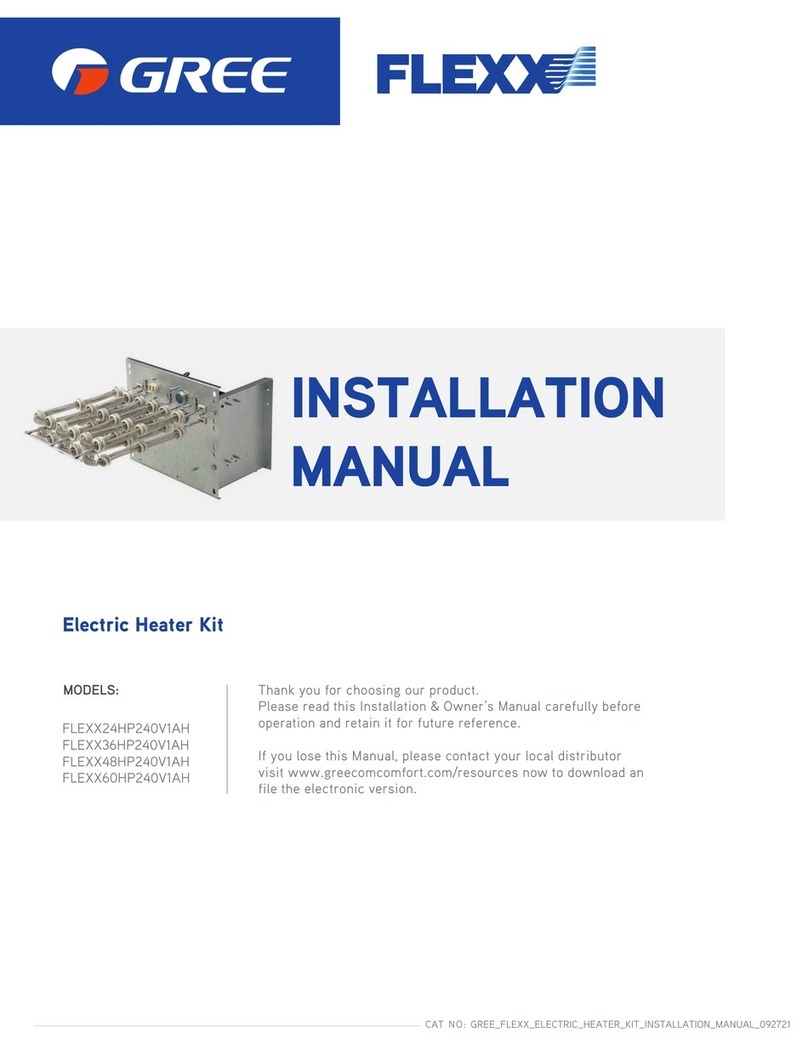
Gree
Gree FLEXX24HP240V1AH installation manual
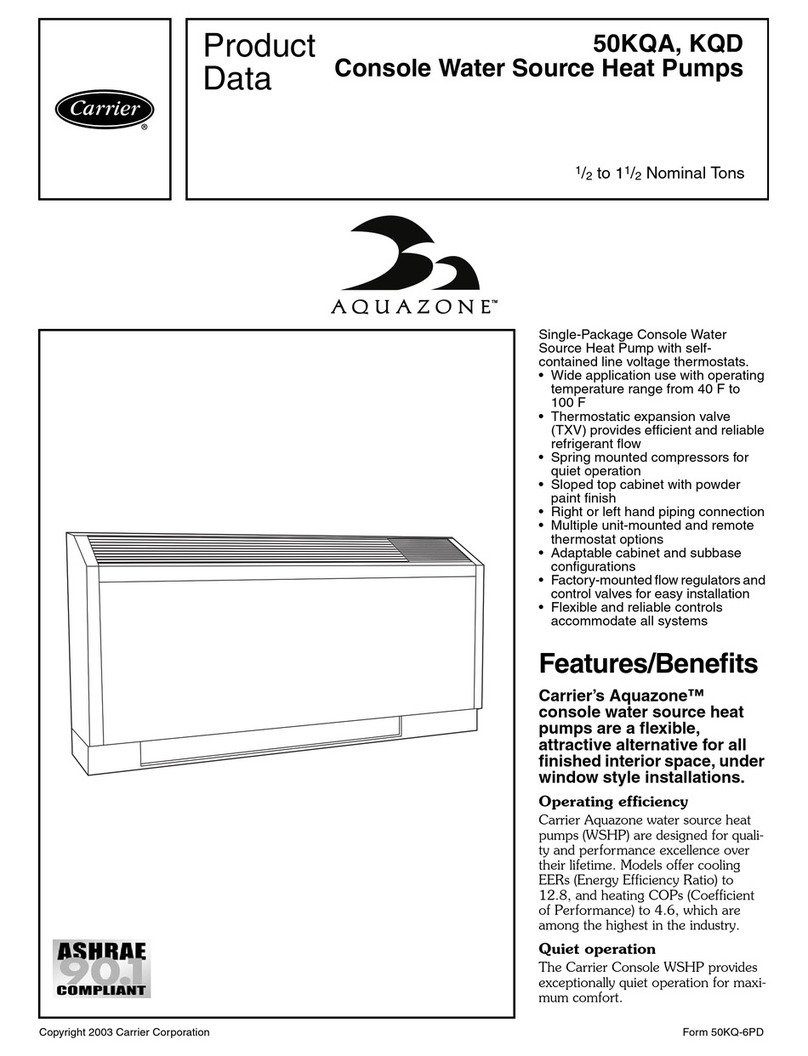
Carrier
Carrier 50KQA Product data

Mitsubishi Electric
Mitsubishi Electric PEH-P8YE Technical & service manual

nilan
nilan Compact P Polar EK 6 kW CTS 700 Software instructions

Panasonic
Panasonic WH-SXH09D0E8 operating instructions
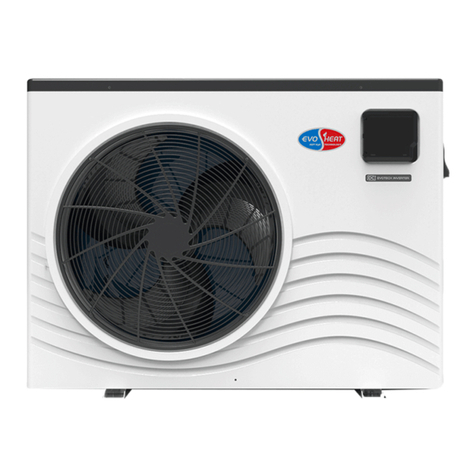
evoheat
evoheat Fusion Series Installation & operation manual
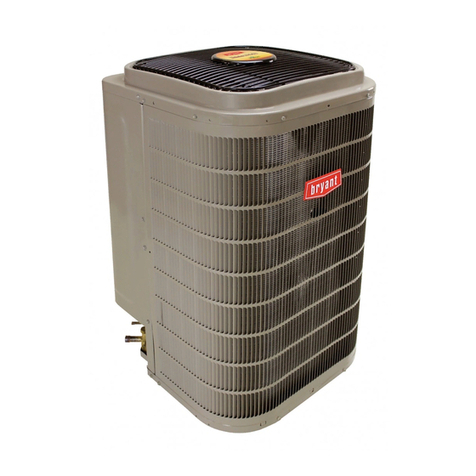
Bryant
Bryant EVOLUTION V 288BNV installation instructions
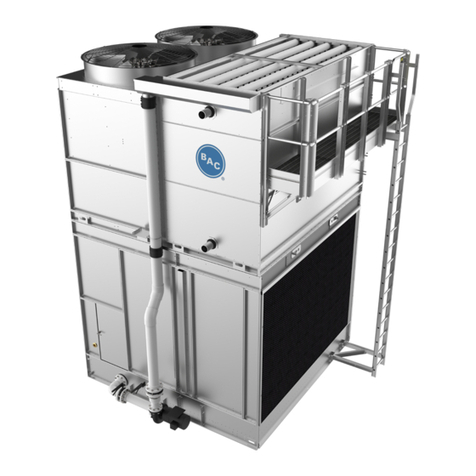
BAC
BAC FXV-0806-12D Series Operation & maintenance manual

SUMMER WAVES
SUMMER WAVES 80Fi Installation & user manual
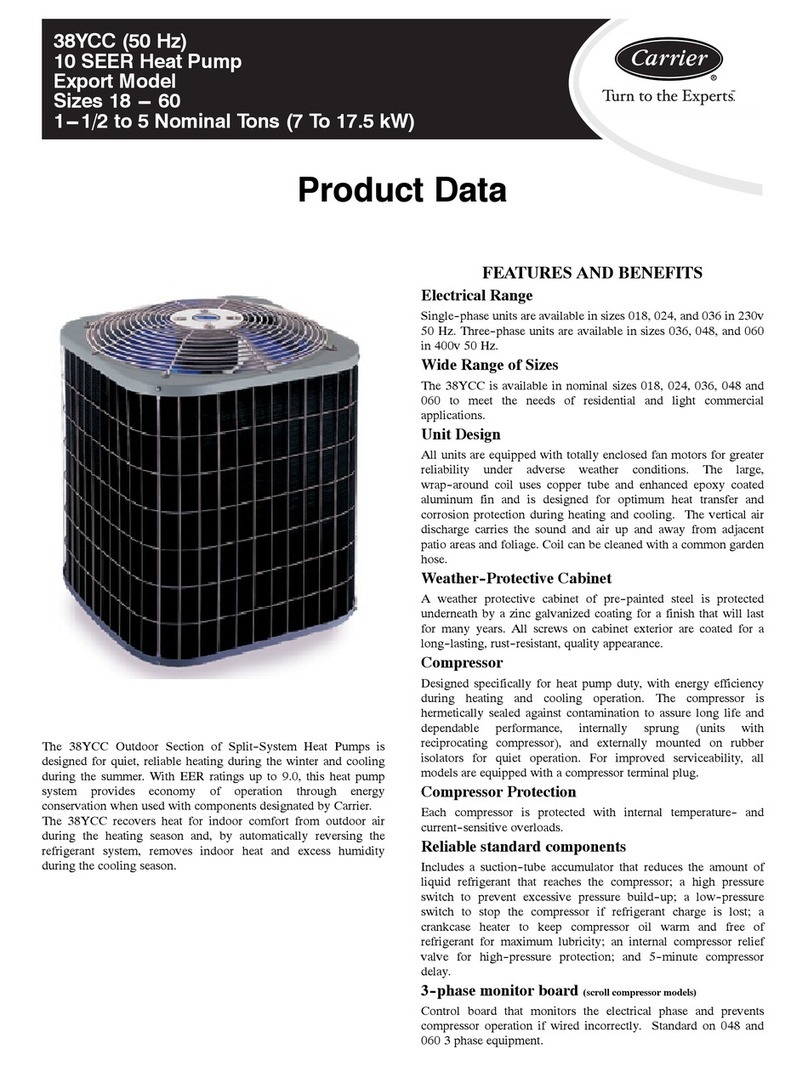
Carrier
Carrier 38YCC Series Product data
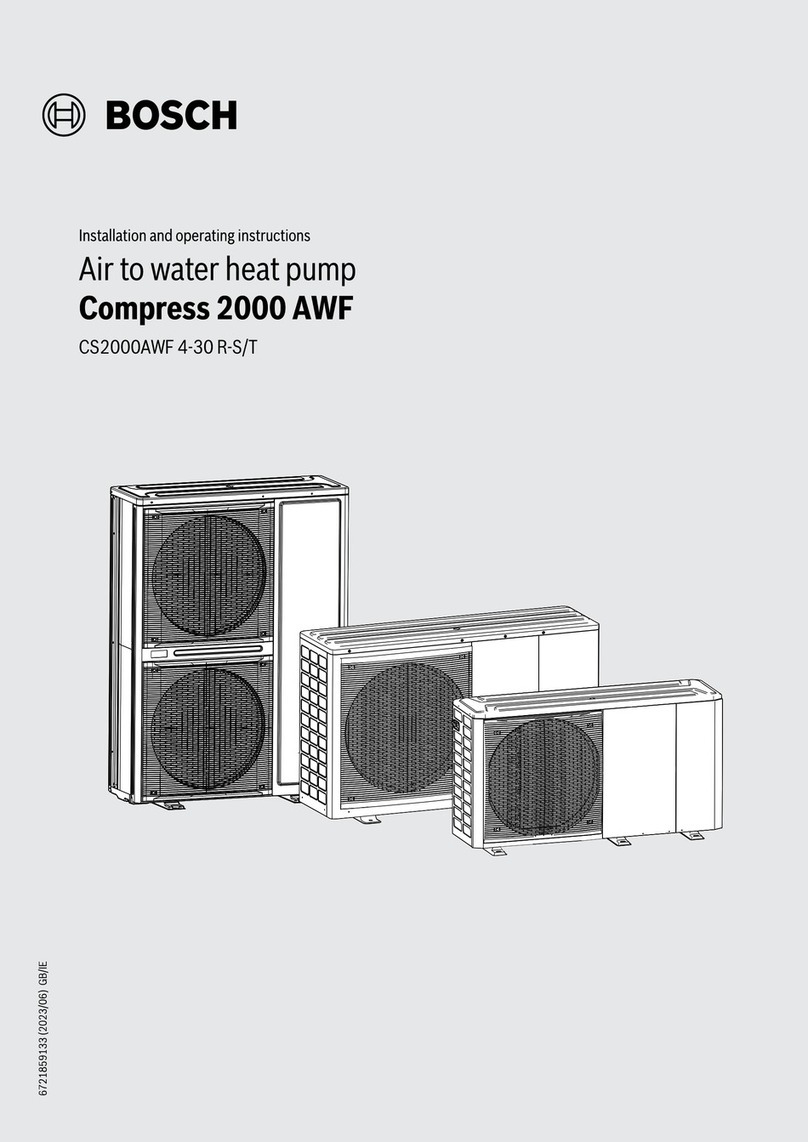
Bosch
Bosch Compress 2000 AWF Installation and operating instructions
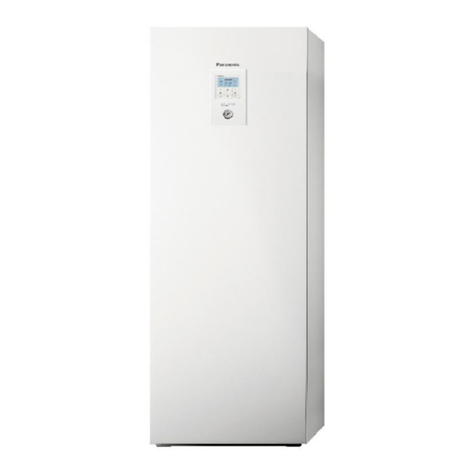
Panasonic
Panasonic WH-ADC0309J3E5 manual
